Main content
Top content
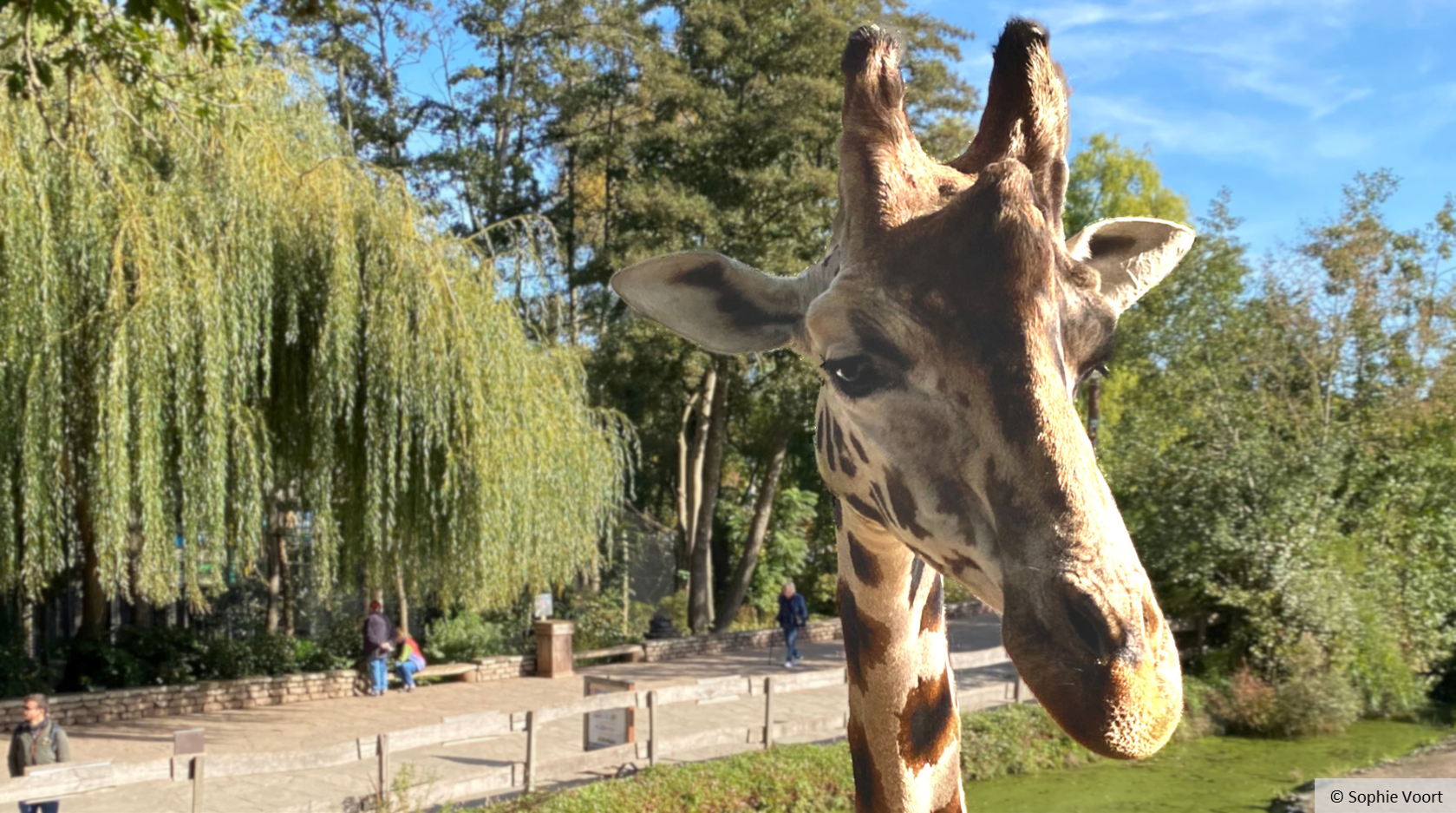
16.03.2023
Gorillas, pandas and co. – Animal welfare oriented behavioural biology excursion to two modern European zoos
Modern animal husbandry concepts were the subject of a three-day excursion offered for the first time by the Behavioural Biology group. Under the supervision of Dr. Oliver Ambrée, Prof. Dr. Chadi Touma and apl. Prof. Dr. Michael Böer, the 14 participating students visited two zoological gardens - one in the Netherlands and one in Belgium.
The excursion aimed to take a closer look at modern animal husbandry concepts focusing on species protection, animal welfare and education. In a preparatory seminar, various topics were presented and discussed, including "Ethical controversies in zoo animal husbandry", "Species conservation in zoological gardens", "Assessment of animal welfare", "Environmental enrichment in zoo animal husbandry" and "Research and education in zoological gardens". At the beginning of October, the group was on the road for three days visiting the Gaiazoo in Kerkrade and the Pairi Daiza Zoo in Brugelette. The latter has been awarded several times as the best zoo in Europe.
The following report by a participating student gives an impression of the precious insights the group gained during the excursion:
„During the approximately five-hour stay at Gaiazoo in Kerkrade, conditions of animal husbandry and the structure of the animal enclosures as well as aspects of behavioural biology were observed and examined. During this tour, we presented profiles of endangered species in short talks. The Gaiazoo was characterized, among other things, by immersive landscape design in which zoo visitors get the feeling of being in the natural environment of the respective animals.
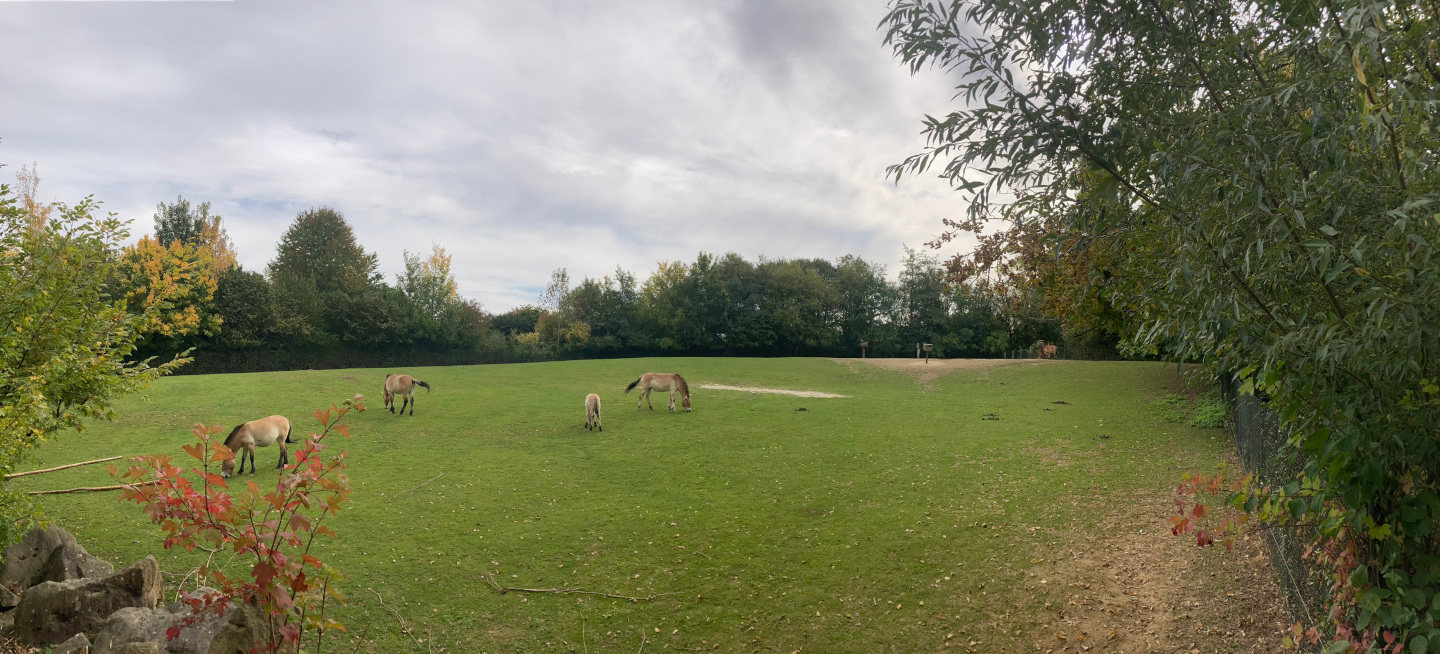
Naturalistic design of the enclosure of the Przewalski's horses in the Gaiazoo (photo: Pia Kruckemeyer)
Following the visit to Kerkrade, we traveled on to Mons, where we visited Pairi Daiza Zoo on the following two excursion days. On the first day, we took part in a guided tour to selected parts of the zoo, which lasted about three hours. During this tour, we learned a lot about animal-friendly husbandry in the zoo, species conservation and research. In addition, we also had the opportunity to feed animals such as giraffes and ring-tailed lemurs, and to hold a royal python. The zoo offered the participants these opportunities to gain a different understanding of nature and species conservation. Their relevance was deepened by providing the opportunity to form an emotional connection to the animals in addition to the biological knowledge that was presented.
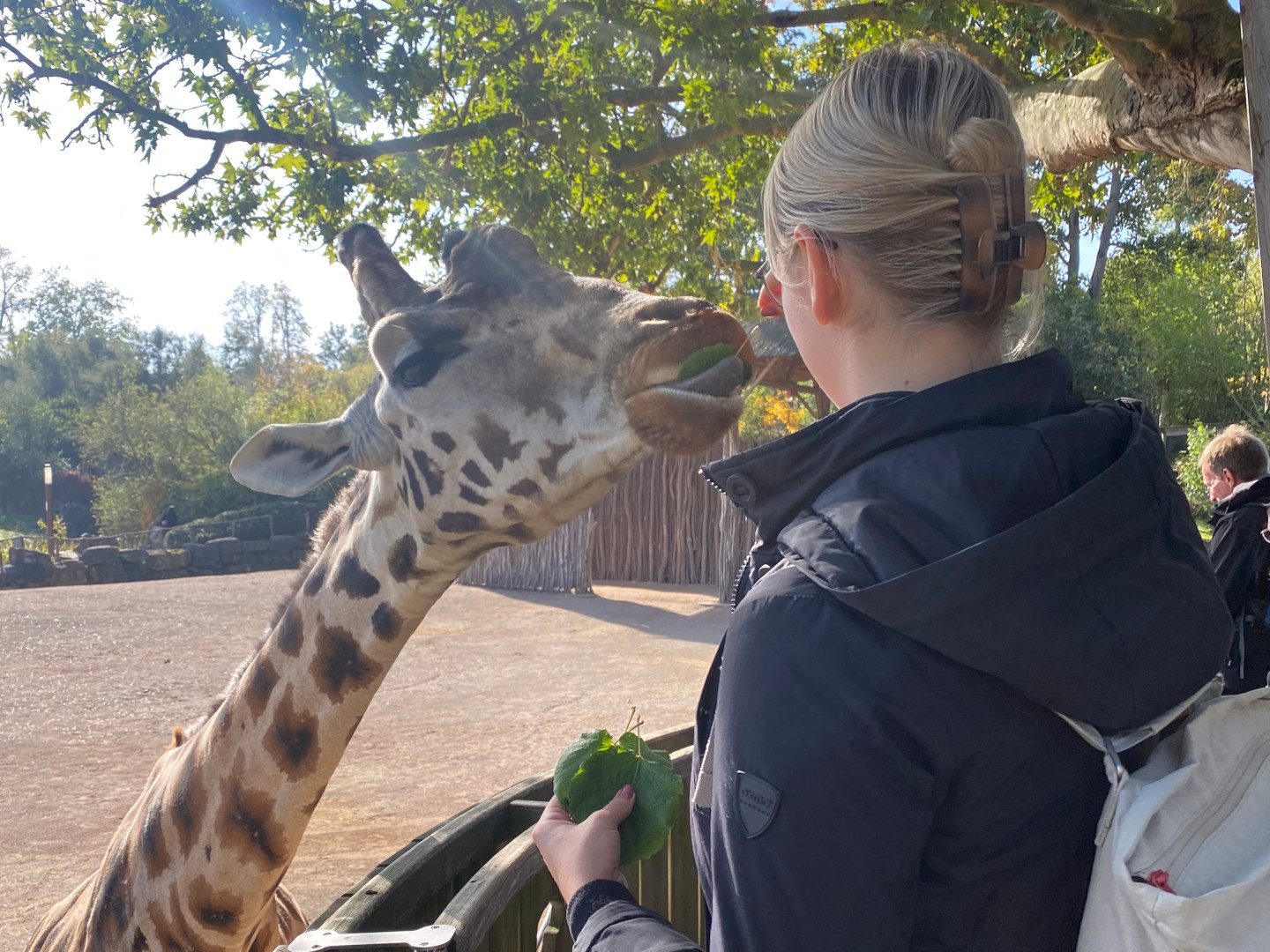
Students were able to get up close while feeding the giraffes (photo: Sophie Voort)
After the tour and during the next day, more exciting species facts were presented and we had some time to explore the zoo on our own. In addition, we had the chance to observe the medical training of the walruses.
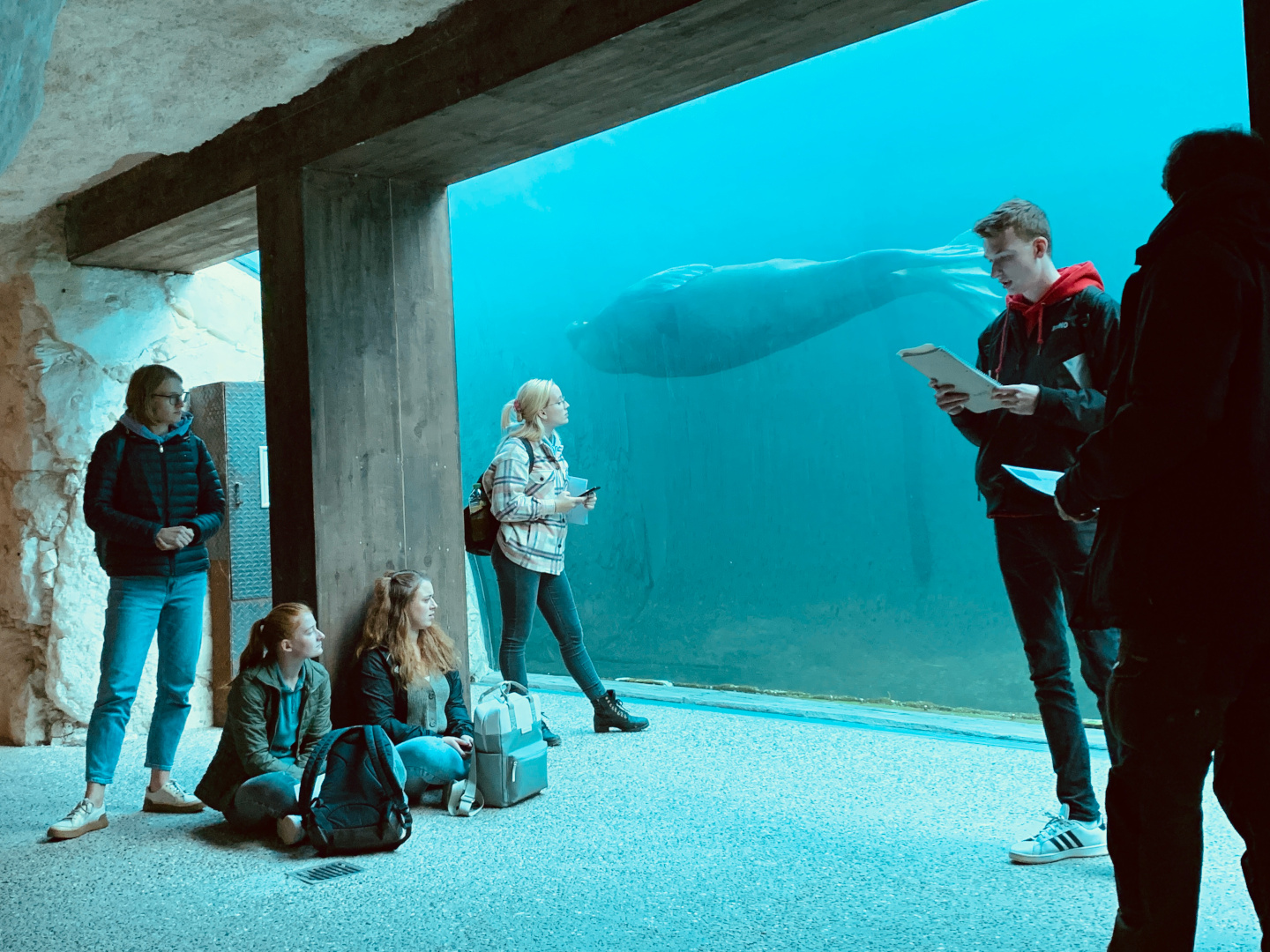
Presentation of a species profile in front of the impressive walrus tank (photo: Sina Meermann)
The Pairi Daiza Zoo is characterized by an adventure park-like layout, where the visitors find themselves in different "worlds". Even more than in the Gaiazoo, one has the impression of encountering the animals in their natural habitat. This feeling is conveyed by the immersively designed enclosures and the surroundings: elements such as a Chinese garden, a Balinese temple or Alaskan log cabins gave the impression of being in a different country. Despite this anthropocentric focus, in which the human experience is paramount, the welfare of the animals is also intensively taken into account. The animals, many of which are on the red list of endangered species, are provided with spacious and impressive facilities with numerous opportunities for activities.
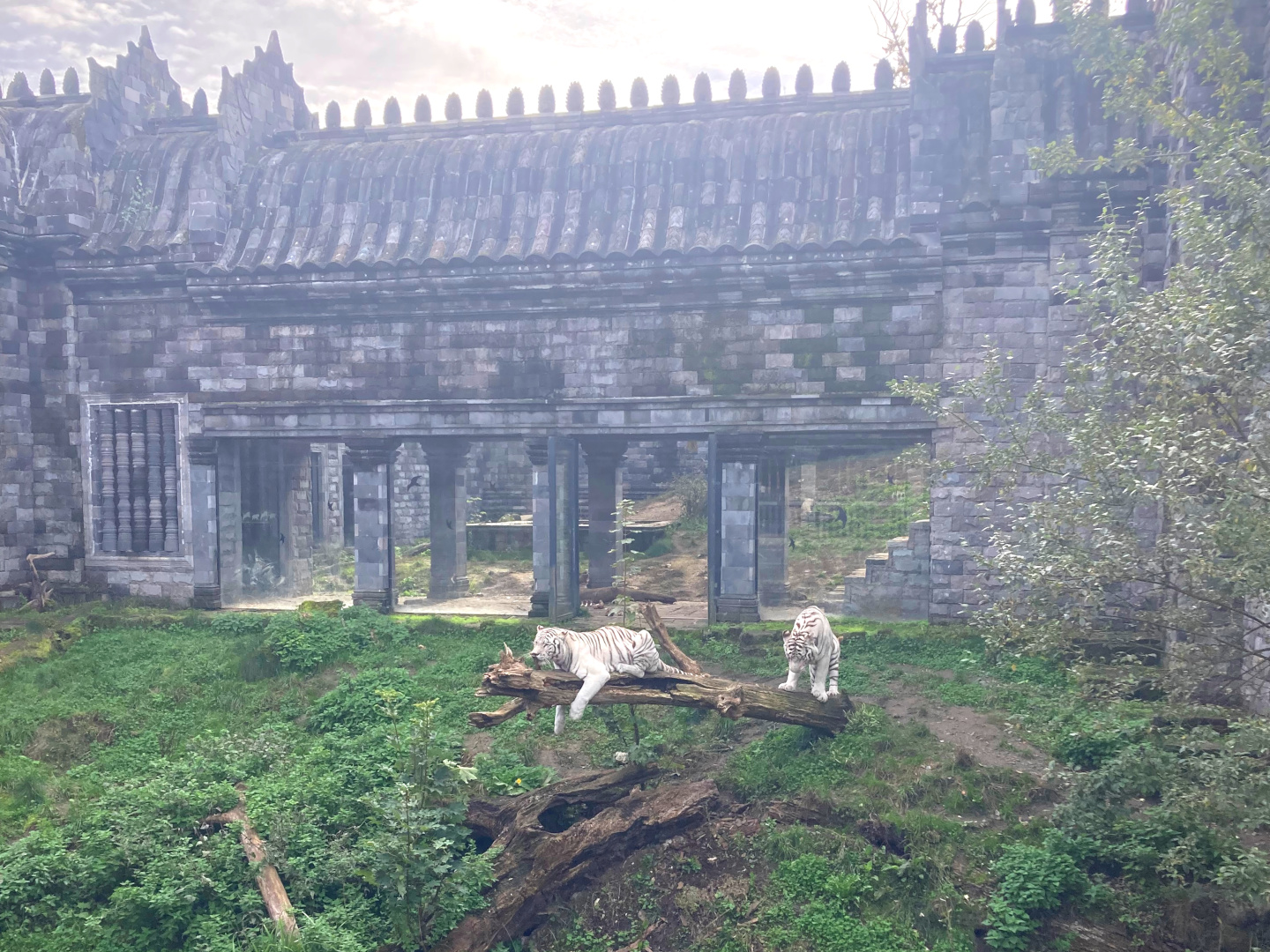
White tigers in their enclosure in the kingdom of Ganesha, an Indonesian temple landscape in Pairi Daiza (photo: Pia Kruckemeyer)
Overall, the excursion gave us insights into cutting-edge zoo animal husbandry. In addition, we were able to see many fascinating animal species, some of which are only kept in a handful of European zoos, such as the Tasmanian devil (in 5 zoos throughout Europe) or the Pacific walrus (in 3 zoos throughout Europe). Furthermore, we learned a lot about animal-friendly husbandry and many interesting behavioural and veterinary facts. In addition, problems and criticism of animal husbandry were also discussed. The excursion offered a new perspective on zoological gardens. It was very exciting to be able to benefit from the knowledge of the lecturers in a relaxed atmosphere and to learn from the presentations of fellow students as well as from the intense discussions of the topics. We learned, for example, what distinguishes a good zoo and which special requirements some animal species have in their husbandry. Orangutans, for example, are exceptionally playful and their enclosures are often equipped with tires, balls and blankets provided for this need. Furthermore, we gained knowledge of how zoological gardens participate in species conservation and research on endangered species, giving us a detailed insight into the broad field of zoo biology.“
Report: Francine McCullough







